The chatbot market
上次更新日期: December 19, 2024
For anyone who’s tried to buy anything online recently, the proliferation of chatbots in an ecommerce setting is no surprise. The sight of a chat box or button on the lower right-hand corner of a seller’s website is nearly universal these days—and the numbers reflect it. The chatbot market is set to reach over $3.9 billion globally by 2030 with over 50 percent of large enterprises investing more capital in chatbots than mobile sales app development. Those are powerful, if unsurprising numbers.
Artificial intelligence (AI) chatbots are now an essential part of any sales or support strategy. They’re affordable, relatively simple to implement, and massively effective at driving efficiency. Combined with sales force automation software and a sales CRM, they’re nearly unstoppable in improving your company’s sales experience.
Most of us have now used a chatbot to communicate with a company—especially after the in-person shutdows of 2020 and 2021—with both positive and negative experiences. Chatbots in and of themselves are incredibly useful, but they do need to be strategically implemented and monitored in order to create a positive user experience. For some companies, that means simplifying their chatbot technology. For others, it means brushing up on a few best practices.
In this piece, we’ll take you through the detailed benefits of AI-powered chatbots, what makes a good chatbot, chatbot best practices, and the best chatbots currently available on the market (with reviews).
- What is an AI-powered chatbot?
- How can AI-powered chatbots drive sales?
- Sales chatbot statistics
- Chatbot best practices
- The best chatbots for sales teams
- How to implement a sales chatbot
- Try a chatbot for your sales team today
What is an AI-powered chatbot?
An AI-powered chatbot is a chatbot designed to use conversational AI and sales force automation to enable prospects and customers to self-serve when interacting with your company. Whether focused on sales or customer service, these bots use pre-programmed conversation flows, natural language processing (NPL), machine learning, and knowledge base integration to essentially act as a digital agent.
Generally speaking, there are three main types of chatbots that can be used for sales or customer support:
- Knowledge-based chatbots: These chatbots answer FAQs and straightforward customer queries such as “How much does this product cost?” These chatbots may redirect customers to a live agent if they cannot answer the appropriate questions.
- Decision tree chatbots: These chatbots converse with users to reach an end goal such as gleaning contact information or locking in a purchase. These chatbots may also provide additional information sources and suggest next steps.
- Task-specific chatbots: These chatbots are specialized and designed to complete unique tasks. They are often programmed to help customers set up accounts, walk through purchases, or troubleshoot products.
Some chatbots are capable of all three of the above, but (as we’ll discuss later) it’s not always a good idea to give any one bot too much responsibility. One of the perks of chatbots is that depending on their complexity, they are extremely affordable. If your company needs multiple chatbots, running one vs. two or three won’t make much of a difference in your tech stack budget.
How can AI-powered chatbots drive sales?
It’s a given that AI-powered chatbots save companies time (and therefore money). Any simple interaction handled by a chatbot is one fewer customer ticket that needs to be handled by a live rep. This frees your support team to focus on customers with more complex or tricky issues that unquestionably call for the interpersonal skills and knowledge of a real person.
The full benefits of chatbots, however, are far more robust and empowering for your business. Here are just a few ways AI-powered chatbots can drive sales and improve the sales process.
Lead generation
Chatbots can do a lot more than just problem-solve. While many customers interact with chatbots once they’ve already purchased products, plenty of potential buyers also interact with them on their way into the sales funnel. Website and social media chatbots are excellent channels for curious consumers to ask questions, give information, and connect with your sales team.
That means chatbots can easily generate leads.
Some companies use information-capture prompts to ask for names and emails, but you can also use your bot to redirect leads to a demo request or an appointment-scheduling app.
Down the line, chatbots can further assist your sales pipeline by optimizing conversions. Especially if your company deals in ecommerce sales, chatbots can maximize revenue by handling transactions outside of working hours and monitoring abandoned carts. They can also suggest cross-sell and upsell opportunities based on customer purchase history or a prospect’s existing cart.
It’s all about taking advantage of the full 24 hours in a day, even when your reps are getting a bit of much-needed rest.
Building customer and prospect profiles
Chatbot analytics reveal a great deal about your prospects. At minimum, even if prospects aren’t having long conversations with your bot, looking at which channels they’re coming from helps determine where your sales and marketing efforts are best spent. For instance, if 60 percent of your bot engagement comes from social media, but only 30 percent of your marketing is geared that way, you might want to readjust.
Similarly, if you notice that most of the chatbot cases passed to live agents come from your website, then that’s the channel you want your reps to keep an eye on.
Tracking each and every aspect of your sales is the fastest way to understand and build more accurate customer and prospect profiles.
Account prioritization
Sales teams can’t spend personal time on every potential customer that comes their way—that’s why companies use lead qualification to prioritize accounts and ensure the best possible outcome for their sales goals. Chatbots can also assist sales teams with this sorting process of opportunity management.
A good chatbot not only helps qualify leads, it also makes sure that only the necessary conversations are passed on to live agents. This means that your reps are exclusively spending their time with prospects who are qualified, interested, and invested in complex inquiries.
Adding a chatbot to the beginning of your sales playbook is a key step towards maximizing rep time and efficiency.
Sales chatbot statistics
It’s easy to claim that chatbots benefit companies, but the truth is, any new sales software drives sales. What makes chatbots stand out from the crowd? Let’s take a look at the numbers.
-
Over the last 12 months, 67 percent of global consumers interacted with a chatbot.
That means over 2/3rds of consumers from all over the world are not only familiar with chatbot technology, but they trust it enough to use it. Additionally, with that many chatbot users, it’s likely consumers will start to expect chatbots and be confused and/or disappointed when that option isn’t accessible.
Chatbots take 70% of conversations from start to finish.
When you consider how many inquiries your sales and support teams handle every day, reclaiming 70% of that time is a game changer. It’s nearly impossible for any team to provide a personalized answer to every inquiry, so reps need to be experts at prioritizing their time—time they don’t need to spend answering simple questions that are available on your website. Chatbots let your reps refocus their efforts for maximum success.
88 percent of users are satisfied with bot-only chats.
An 88 percent satisfaction rate is a dream for most companies, and chatbots are proven to make those dreams come true. In fact, chatbots are so successful that their satisfaction rate is two percent higher than chats passed to human agents (although take that with a grain of salt—more complex issues tend to come with lower satisfaction rates). If a simple bot can please your customers, it’s worth the investment.
Chatbots improve abandoned cart numbers by 7-25 percent.
Sure, many digital carts are abandoned because buyers either choose not to purchase or go with another product. But for the carts that are abandoned because the buyer got distracted, you need a strategy to give customers a friendly, automated nudge. Chatbots quickly redirect the buyer’s journey with a simple message encouraging them to finish the transaction.
By 2023, chatbots will save businesses $8 billion in expenses and 2.5 billion hours in labor.
This statistic speaks for itself. The time and money saved by the sales automation of chatbot communication is staggering. Chatbots are the next unmissable tool in your sales technology stack.
Chatbot best practices
Before we jump into the best chatbots on the market, let’s take a look at a few strategies for getting the most out of your purchase.
Keep your live agents accessible
Ideally, live agents won’t be necessary for every single bot interaction, but it doesn’t mean they shouldn’t be available. If we’ve learned anything about customers in the current market, it’s that they love choice. When live agents aren’t available, that choice gets taken away — and the customers are less than pleased. According to our CX Trends Report, 46 percent of customers become frustrated when they can’t choose between a bot and a human—and even more frustrated when their issue can’t be escalated.
Try as much as possible to keep your reps available for customers who want them. After all, your chatbot is a tool, not a person. They bring different skill sets to the table.
Only assign your bot basic responsibilities
AI and chatbot technology is remarkable and can completely change the way your company works with prospects—but it’s not magic. One day in the future, chatbots will be able to field complex issues and provide customized technical support. Today is not that day. Make sure you’re keeping your bot’s responsibilities reasonable.
Most high-level chatbots should be able to provide information, solve simple issues, complete transactions, and answer questions from your knowledge base outside of business hours. Beyond that, issues should most likely be escalated to a human rep.
Use conversational flows to automatically collect consumer data
Even if a customer comes in with an issue they know needs to be escalated, your bot can still set everyone up for success. By collecting key profile information upfront, your chatbot ensures that your customers don’t need to repeat themselves or waste time relaying basic information once connected.
If a prospect uses a bot, this information is even more crucial. Even a simple name and email before answering queries gives your team a new, confirmed lead to follow up with.
Use sales reports to improve your bot
Like any other sales tool, your bot needs frequent maintenance and assessment to make sure it’s performing at peak condition. Most chatbots come with the ability to generate analytics and usage reports. You can use those reports to evaluate when your bots are being used and if/when they are successful in solving problems. If they’re struggling, you can take time to change tactics. If there are FAQ’s that always get sent up the chain to a human rep, can you program more complete answers into the bot’s responses? If your bot isn’t being noticed, can you adjust the color or size of the widget?
Fixes are often simple, but they should be applied after checking the data first.
Tell users that they’re speaking to a bot
Half the sales process is building trust between prospects and your company, so don’t jeopardize that trust by lying. It turns out, people don’t like being lied to. In fact, 48 percent of people think it’s “creepy” when a chatbot pretends to be a real human being. It’s tempting to pretend and try to keep the entire process personal, but studies show that prospects actually enjoy talking to bots and are more likely to trust them with sensitive information than a live human.
Stay upfront with your prospects and let the bot do the talking.
The 6 best chatbots for sales teams
Figuring out the best chatbot for your sales team isn’t always so cut-and-dry. You need to know what your budget is, what problems you’re looking to solve, and what tech capabilities your company has access to.
A few key questions to ask before diving into the market are:
- What problems do I want to solve with a chatbot?
- What resources do I need outside of a chatbot to solve those problems?
- What channels do I want my chatbot to work in?
- How much knowledge will my chatbot need and does my company have that knowledge base accessible?
- How will I manage the sharing of labor between my chatbot and my sales team?
- What is the budget for my chatbot? Is it scalable?
Once you have the answers to these questions, it’s time to start shopping. Below are six of the top chatbots on the market in 2022 along with price breakdowns and reviews.
Zendesk
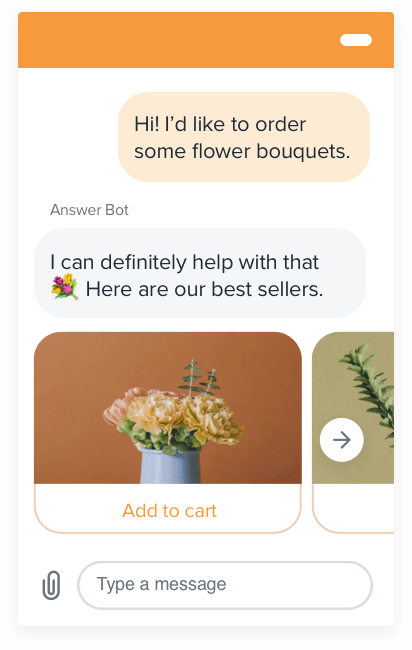
Zendesk’s Answer Bot is an AI chatbot designed to help businesses deliver reliable, exemplary customer and sales support. Answer Bot stays on the job 24/7, ensuring your prospects and customers always have a helping hand, no matter where they’re located. Additionally, with chats available in 17 different languages, Answer Bot is prepared to solve local and global problems without missing a beat.
With Answer Bot, you can leave common inquiries to your AI while you put deeper personal touches on more complex problems. Answer Bot can handle multiple channel inputs at one time, so you never have to worry about missing an important inbound question. Plus, you’ll always know your prospects are in good hands because Answer Bot always knows when more help is needed. When necessary, Answer Bot will quickly redirect larger issues to live agents before getting back to the front lines.
Zendesk helps you meet your prospects where they are. Whether you need to chat via email, website chatbot, or social media messaging channels, Answer Bot is there for you. Through numerous available integrations, Answer Bot works with your knowledge base to answer questions from any channel you use — especially if you’re already using a help center.
Need specialized chatbot features for your business? Zendesk’s Marketplace makes it simple to connect with a large number of industry-leading AI chatbots. Keep your software quality high and your chatbot options limitless.
Pricing Plans:
- Suite Team: $49 user/month
- Suite Growth: $79 user/month
- Suite Professional: $99 user/month
- Suite Enterprise: $150 user/month
Free trial: 14 days
Features:
- Applicable across many channels, such as chat, messaging, email, and Slack
- New language model allows Answer Bot to handle slang
- OOTB (no code) bot builder
- Information capture
- Seamless bot-to-human handoffs
- Omnichannel conversation (case) management
- Reporting and analytics
- Article suggestions for self-service
- Launch in minutes
- Customize to the look and feel of your brand
- Offer support in 17 languages including Chinese, Japanese, Korean, and Russian
- Provide agents with context and conversation history
- Map and pre-populate information from customers into existing ticket fields
- Support more customers, eliminate wait times, and watch customer satisfaction soar
Tidio
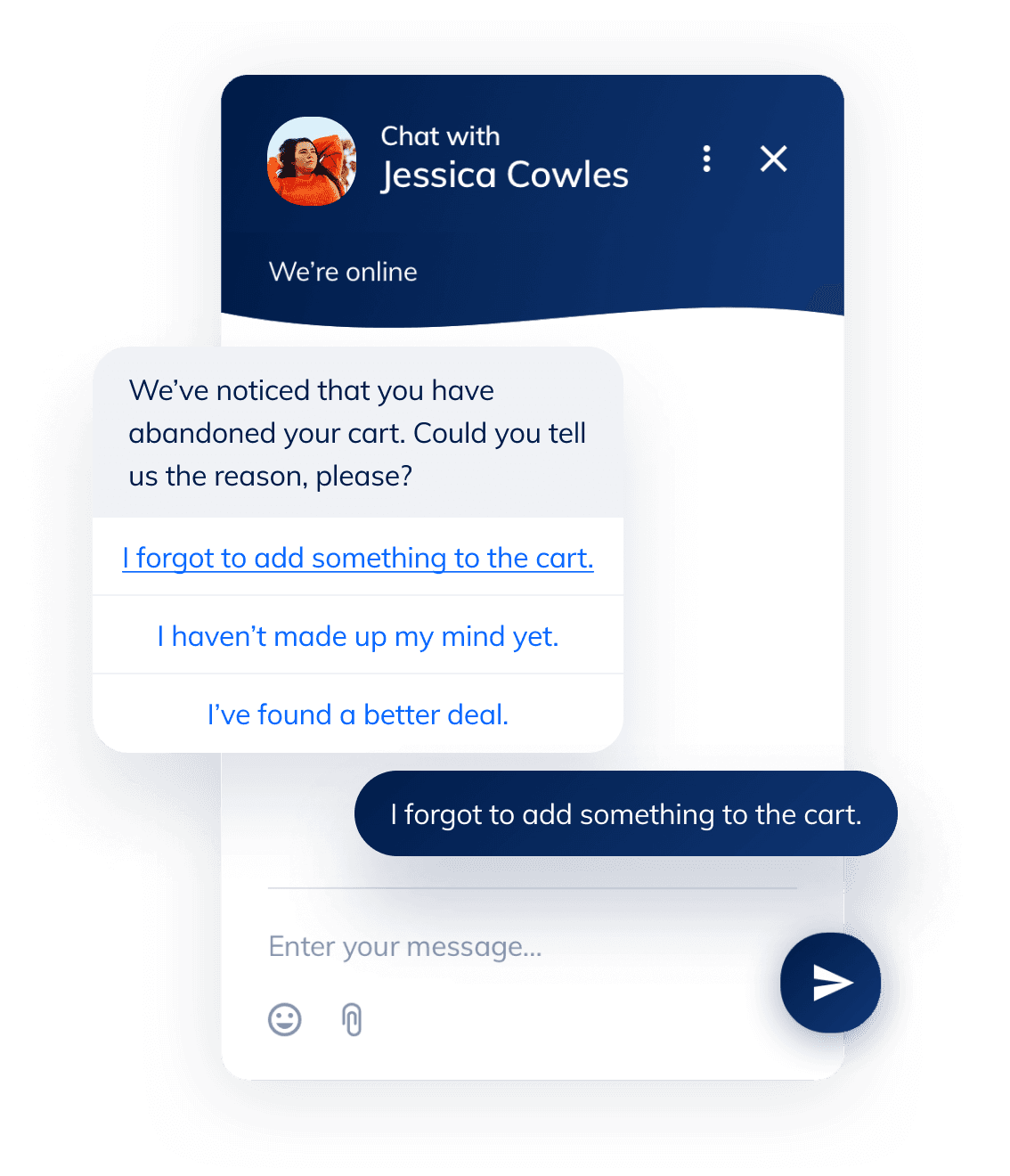
Tidio is a codeless, buildable chatbot designed for quick assembly and user-accessibility. Tidio prides itself on combining live chat and chatbot tools into one system to streamline sales and customer service. With a drag-and-drop designer and over 35 pre-designed templates, users can build a chatbot for any sized business and launch it within five minutes.
In keeping with its user-friendly goals, Tidio is integratable into any existing CRM, including Zendesk. It’s also integratable with the majority of existing non-CRM sales and customer service software, so you don’t have to worry about customers falling through the cracks. Further partnering with existing software, Tidio allows full design customization of your bot so that all of your channel communications perfectly match your brand aesthetic.
Pricing Plans:
- Free
- Chatbots: $49/month for three operators
- Communicator: $19/month/per operator
Free Trial: 7 day free trial and limited free version available
Features:
- Unlimited chats
- Desktop and mobile apps
- Visitor info
- 3rd party apps integration
- JavaScript API
- Chatbot templates
- Visual chatbot editor
- Live typing
- Viewed pages
- Live visitors list
- Permissions
- Segmentations
- Satisfaction analytics
- Multiple channel integration
HubSpot
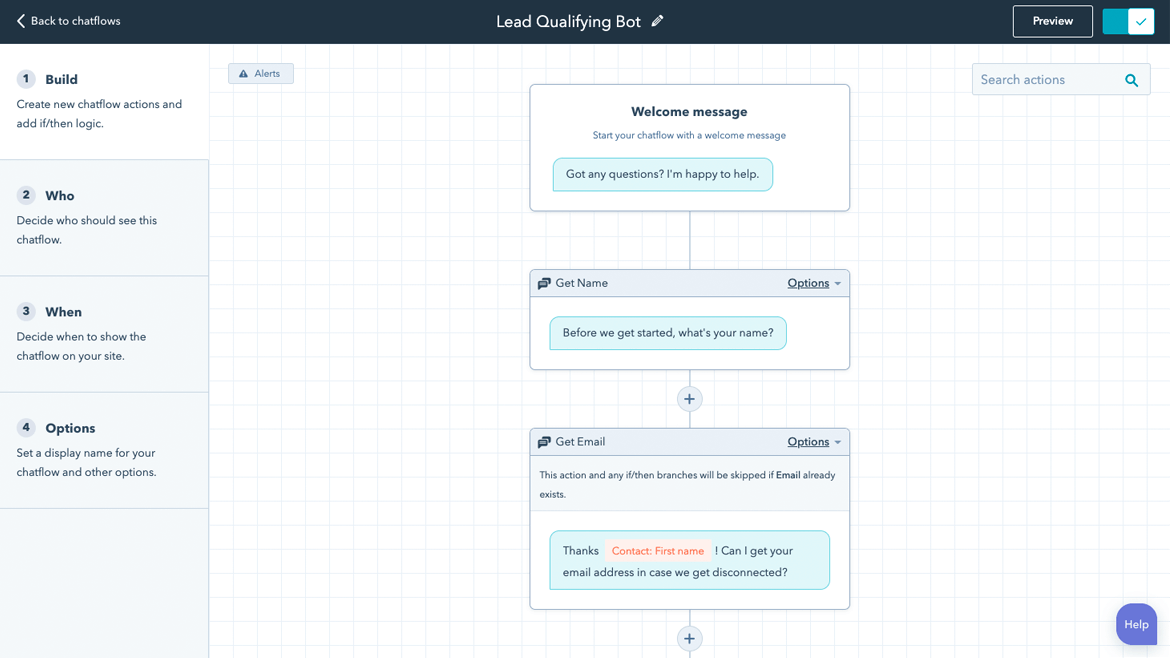
When you think of HubSpot, you might not immediately think of chatbots, but—especially for current HubSpot users—the HubSpot chatbot builder is a great basic-level bot. Integrated with a CRM, the HubSpot bot can qualify leads, book meetings, facilitate self-service for customers, and create tickets. This chatbot is designed for easy implementation and high levels of user-accessibility, especially for non-technical buyers.
While a highly-functioning chatbot, it is worth noting that advanced features of HubSpot chatbot are only available in the Professional and Enterprise plans of HubSpot Service. If you need complex or additional features and you are not already a HubSpot user, this might not be the chatbot for you.
Pricing Plans: Free with Zendesk
- Service Hub Starter: $45/month for 2 users, $23 month/user for additional users
- Service Hub Professional: $360/month for 5 users, $72/month for additional users
- Service Hub Enterprise: $1200/month for 10 users, $120/month for additional users
Free trial: 14 days
Features
- Ticket creation
- Lead qualification
- Meeting booking bots
- Custom branching logic
- Advanced targeting
- Native HubSpot CRM, marketing software, and service software integrations
- Up to 100 inboxes and 5000 canned snippets
- 5000 templates
- 1000 personal and team meeting links
Ada

Ada is an AI chatbot with Natural Language Processing (NLP) designed to create personalized brand interactions without relying on complex coding or additional developers. Through integration with a CRM like Zendesk, Ada works with your internal knowledge base to offer self-service solutions during sales and customer service. With Ada, users can alter their profiles, upgrade accounts, schedule appointments, and complete transactions.
This easy-to-use chatbot also integrates seamlessly with social media platforms so customers can go from Facebook to live assistance in the click of a button. A clean interface and on-demand support makes Ada a strong recommendation for businesses looking to keep it simple.
It is worth noting that despite overall high reviews, some users found it difficult to gain sales analytics from Ada. If you’re a larger enterprise looking for detailed analytics, Ada might not be the chatbot for you.
Free trial: Demo available
Pricing: Free with Zendesk
Features:
- A dedicated account manager and automated customer experience (ACX) consultant
- Launch a bot in 30 days
- Best in class NLP and natural language understanding (NLU) tuned for customer experience
- Actionable insights
- 24/7 personalized support in 100+ languages
- Platform integrations with customer experience software and data systems
- Personalized messaging using authentication and conditional-based logic
- Personalized branding and proactive chat
- Seamless integration into Zendesk’s ticketing system
- Knowledge base with searchable articles and community forums
- Mobile optimization of the self-service experience
- Configurable, rules-based drip sequences with automated messages
Drift
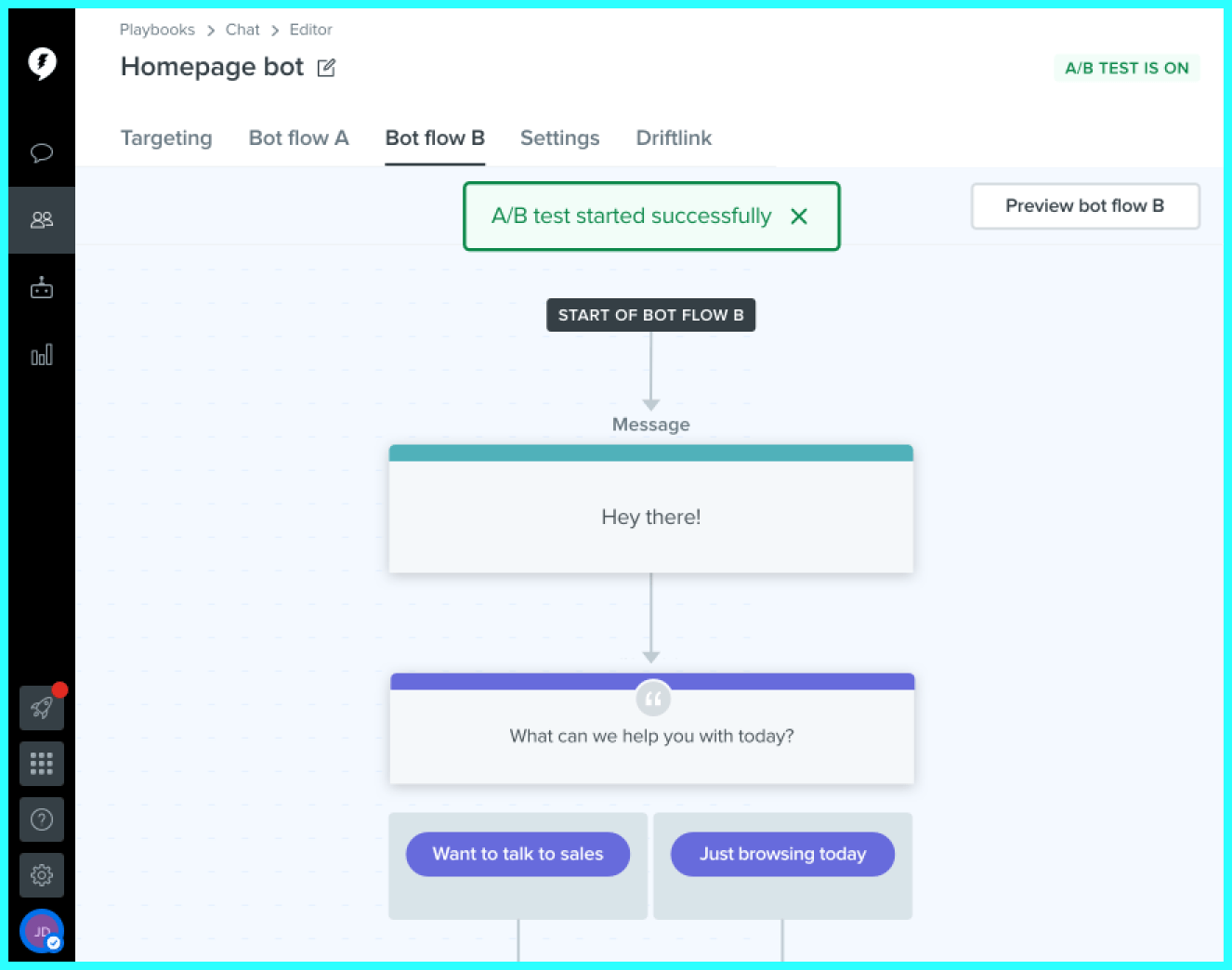
Drift is a multi-use conversational tool combining live chat and chatbots for businesses of all sizes. Unlike many other chatbot companies, Drift focuses on creating a comprehensive communication experience. Its unique features, such as Drift Deal Room, create consolidated sales reports in shared spaces for companies and customers. In many ways, Drift works very similarly to a CRM. However, it is not a CRM and does not include the level of features available in the most popular CRMs on the market. That said, Drift is user-friendly and easily integratable with most—if not all —existing sales and customer service software.
While a great fit for a specialized company, Drift does come with one setback: the majority of useful features are only available in the higher-priced tiers. While a smart business decision on Drift’s part, this does mean that smaller companies may struggle to reap the full benefits of Drift’s software.
Pricing Plans: Contact Drift for a custom quote regarding the following plan options:
- Premium
- Advanced
- Enterprise
Free trial: Demo available
Features:
- Chat widget
- Chat routing and live chat
- Mobile application
- Lead qualification
- Data tracking and reporting
- Personalized playbooks
- A/B testing
- Multiple languages
- Custom RBAC
- Security encryptions
Intercom
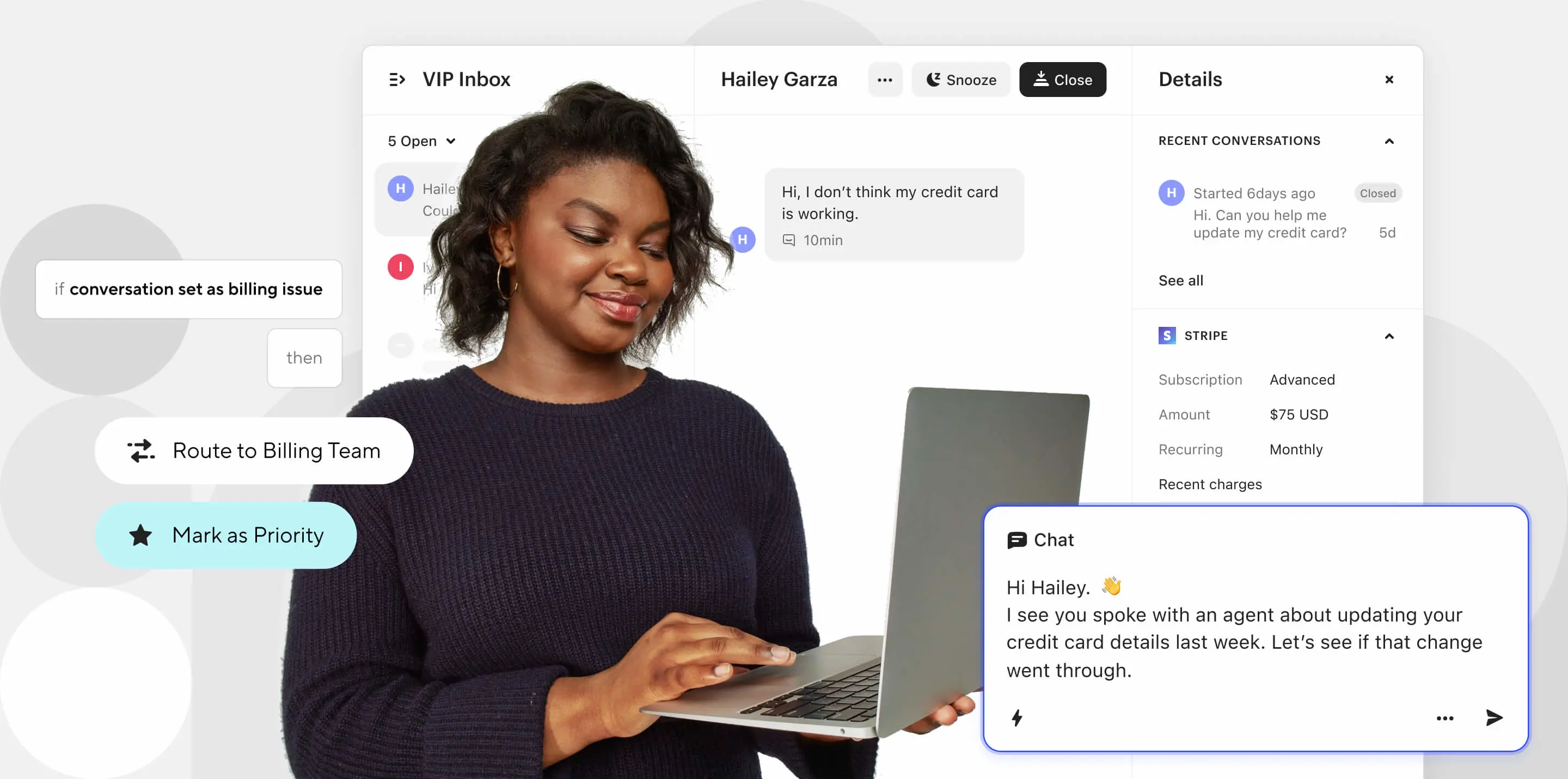
Intercom started as a messaging platform specifically designed for healthcare, financial service, education, and e-commerce industries. The company released its first chatbots in 2018 with highly customizable options—a positive from a features standpoint, a risk from a tech-history standpoint.
Custom Bots from intercom integrate with existing software, especially CRMs like Zendesk, to automate sales and workflows. They assist in answering prospect/customer questions, but also help your team with internal activities like lead qualification. They can also be modified by your teams to focus on specific targeting depending on visitor traffic and proactively start chats (rather than waiting for users to start the conversation).
While highly customizable, Intercom Bots are reviewed as easy to use by non-technical users as they offer a no-code chatbot builder.
Pricing Plans: Free with Zendesk
- Very small businesses can use the starter package at $74/month with optional add-ons.
- Larger businesses should contact Intercom directly for a quote on one of the following plans:
- Support
- Engage
- Convert
Free trial: 14 days
Features
- 24/7 automated support
- Automatic recognition of similar questions and answers from past conversations
- Team inboxes
- Ticketing workflows
- Advanced reporting
- Predictive answers based on what customers are typing
- Support for 32 languages
- Brand voice and tone customization
How to implement a sales chatbot
Depending on how complex you want your chatbot to be, there are three key ways to implement sales chatbots. We’ll use Zendesk software as an example, but these three principles apply to the majority of major CRM platforms.
-
Build your own chatbot
If you have the development team and the tech know-how, you can always create your very own custom chatbot. With Zendesk, chatbot building is done through the Chat Conversations API. Building a custom chatbot from scratch comes with incredible benefits, including specification, optimization, and state-of-the-art features. However, it can be a risk if your company doesn’t have internal developers to monitor and update your bot. - Use Answer Bot
If you’re already a Zendesk customer or interested in Zendesk Sell, we highly recommend Zendesk Answer Bot. Answer Bot is already a part of the Zendesk software family, so integrations are a breeze. You can use Answer Bot in emails, web forms, messaging, knowledge capture, slack, API, and mobile. You can also partner Answer Bot with Zendesk Messaging and Flow Builder to create conversational flows and automations.
To learn more about Answer Bot, take a look at our in depth guide. - Integrate with a third-party solution
Sometimes, you either need specific features or you’re already using a third-party application. That’s absolutely fine. The third way to implement a chatbot with Zendesk is to integrate a third-party application. Different chatbots will have their own specific integration instructions (depending on complexity), but they are generally very straightforward.
Zendesk integrates with most third-party apps, but if you want to double check, go to Zendesk Marketplace for a full list of available integrations. Keep in mind, Zendesk is limited by the available channels on your third-party app. If your app does not include a channel for social media integration, Zendesk CRM cannot replace that channel.
Try a chatbot for your sales team today
With a no-obligation free trial at your fingertips, it’s time to start your chatbot journey today. Zendesk Answer Bot is the 24-hour, no-complaints employee you never knew you needed. With Answer Bot, your sales team can field general questions, qualify leads, and manage conversations without having to manually touch every single interaction. With more audience communication and more time on your reps’ hands, there’s no limit to what they’ll accomplish.
Request a free trial today and onboard Answer Bot as the newest member of your sales team.
